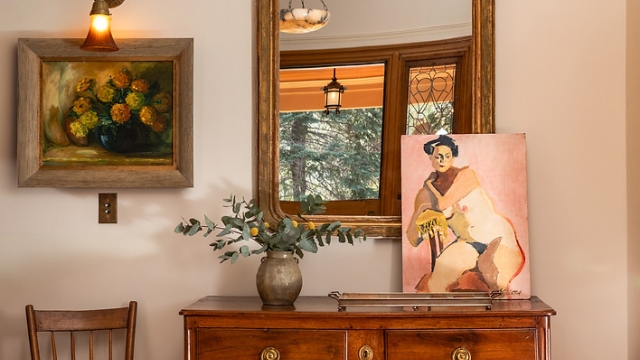 For those interested in learning more about the intricacies of interior design, the best way to start is to Get In Touch with a professional who can guide you through the process of creating a space that truly reflects your personality and enhances your lifestyle.
For those interested in learning more about the intricacies of interior design, the best way to start is to Get In Touch with a professional who can guide you through the process of creating a space that truly reflects your personality and enhances your lifestyle.
Interior design is more than just arranging furniture and choosing paint colors; it is an intricate art form that reflects personality, enhances functionality, and creates a harmonious space that resonates with its inhabitants. It involves a deep understanding of space, color theory, and aesthetics, transforming ordinary rooms into extraordinary environments that inspire and uplift. Whether you are revamping a cozy nook or redesigning an entire home, the principles of interior design can guide you toward creating a sanctuary tailored to your unique tastes and lifestyle.
In today’s fast-paced world, the significance of an inviting and well-designed space cannot be underestimated. A thoughtfully curated interior can promote well-being, productivity, and creativity, making it essential to embrace the nuances of design. From selecting the right furniture pieces to understanding the impact of lighting, each element serves a purpose in the overall tapestry of your environment. Join us as we delve into the art of interior design, exploring innovative ideas and practical tips to transform your space into a true reflection of who you are.
Understanding Interior Design Principles
Interior design is more than just arranging furniture; it encompasses a blend of aesthetics, functionality, and harmony. The key principles of interior design include balance, contrast, rhythm, scale, and harmony. Each of these elements plays a crucial role in creating spaces that are not only visually appealing but also functional and comfortable. Understanding these principles is fundamental for anyone looking to transform their space effectively.
Balance refers to the distribution of visual weight within a room. It can be symmetrical, where elements are evenly arranged around a central point, or asymmetrical, which involves a more dynamic placement of items. Achieving balance ensures that a space feels stable and orderly. Meanwhile, contrast allows designers to highlight differences between colors, textures, and shapes, adding interest and energy to a room. This interplay creates a more vibrant environment that captures attention and evokes emotional responses.
Another critical aspect is scale and proportion, which ensures that furniture and decor fit well within the dimensions of the space. Proper scale makes a room feel inviting, while incorrect proportions can lead to discomfort and chaos. Harmony ties all these principles together, creating a cohesive look that enhances the overall aesthetic. By understanding and applying these fundamental principles, one can master the art of interior design and create spaces that reflect personal style and fulfill practical needs.
Choosing the Right Color Palette
Selecting the right color palette is crucial in interior design, as colors can evoke various emotions and set the tone of a space. Start by considering the purpose of the room. For instance, calming blues and greens are perfect for bedrooms, while vibrant reds or yellows can energize a kitchen or living area. Take into account the natural light in the room since different hues can appear differently based on light conditions. This foundational step will guide your choices and create a cohesive atmosphere.
Next, think about the overall style you want to achieve. Are you aiming for a modern, minimalist look or a warm, rustic feel? Colors play a significant role in defining style. Neutrals like whites, grays, and beiges can serve as a great base, allowing you to introduce brighter accents through furniture and decor. Experimenting with color swatches in different lighting can help reveal how colors complement each other, ensuring a harmonious blend that aligns with your vision.
Finally, don’t shy away from using color to express your personality. While it’s important to maintain balance, incorporating your favorite shades or unique color combinations can make the space feel truly your own. Consider creating an accent wall, using colorful artwork, or adding vibrant furnishings to infuse life into your design. By carefully curating your color palette, you can transform any room, making it reflect your taste while fulfilling its intended function.
Incorporating Furniture and Decor
Selecting the right furniture is crucial to creating a cohesive and inviting interior design. Consider the scale of your space when choosing pieces, as oversized furniture can overwhelm a small room, while too-small items may make a large area feel sparse. Aim for a balanced aesthetic by mixing different styles and materials, such as pairing a sleek modern sofa with rustic wooden accents. This contrast not only adds visual interest but also reflects your personal style.
When it comes to decor, layering textures and colors can elevate the overall design. Incorporate textiles like cushions, throws, and rugs to soften the look and make the space feel more comfortable. Artwork, photographs, and decorative objects serve as focal points that can tell a story about your personality and interests. Be mindful of creating a harmonious color palette that ties everything together, allowing various elements to complement rather than compete with each other.
Lighting plays a significant role in enhancing the beauty of your furniture and decor. Utilize a mix of ambient, task, and accent lighting to create depth and highlight key features in the room. Consider using unique light fixtures as artistic statements that fit the theme of your design. The proper lighting not only showcases your carefully chosen pieces but also sets the mood, transforming the atmosphere of your space from ordinary to extraordinary.
Creating Functional Spaces
When it comes to interior design, creating functional spaces is essential for enhancing both the aesthetics and usability of a home. Each room should serve its intended purpose while also fitting seamlessly into the overall design theme. Consider the activities that will take place in each space and choose furniture and decor that facilitate those activities without cramping the area. From optimizing traffic flow to ensuring that the layout suits your lifestyle, functionality should always be at the forefront of your design decisions.
Incorporating multifunctional furniture is a brilliant strategy to maximize space and utility. Pieces such as ottomans with storage, collapsible tables, or sleeper sofas can transform a room and provide versatility. This is particularly important in smaller living areas where every square foot counts. Choose items that not only look good but also serve multiple purposes, allowing you to adapt your space according to your needs and preferences.
Lighting also plays a crucial role in the functionality of a space. It can enhance the mood while allowing for various tasks to be performed effectively. Combining natural and artificial light sources can create a vibrant atmosphere and ensure that the space remains practical at all times. By carefully considering your lighting options, you can make any area more inviting and efficient, ultimately elevating the overall functionality of your interior design.






